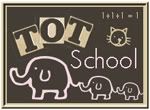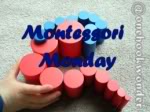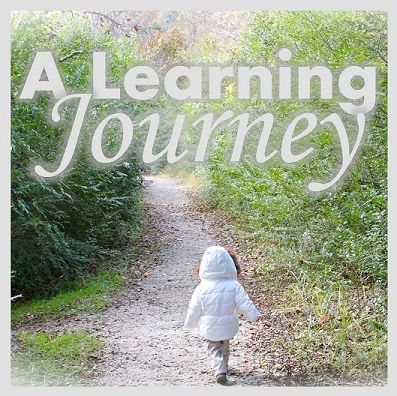Alyssa is 4 1/2 years old now! Wow ... I still can't believe my baby girl is not a baby anymore. Feel free to use the ideas posted on my blog. Photos may not be used without my permission. If you have found something useful here, please send a link back to my blog.
I love creating activities or games for Alyssa as supplements to her curriculum. I can get a bit carried away so I have to watch myself. As she completed one of her MUS Primer lessons titled, Skip Counting to Find Area, I was immediately reminded of a hands-on multiplication activity that I used to do in my classroom. Then, my brain started spinning with other ideas but I had to limit the number of activities for the day so that math didn't end up lasting a whole day even though it is so much fun!
Color Tile Area
Materials Needed1"Color Tiles (or paper squares)
1" Graph Paper Grid - This is the one I found during a quick search
Marker and Pencil
What We Did
I printed the 1" graph paper. I drew several rectangles on the paper with a black marker. Her job was to find the area of the rectangle. Alyssa used the color tiles to cover the rectangle and skip counted to find the area. I set-up the work so that it looked exactly like her MUS sheets but added in the tiles to make it a bit more hands-on. The MUS curriculum has the child skip count by rows. I asked her write the numbers as she skip counted to the right of the row. She has mastered skip counting by 2's, 5's, 10's, 100's, and 1000's. She wrote the answer (the area) inside the rectangle. I forgot that we haven't worked much on skip counting by 3's yet so we discussed ways for her to find the answer without having to count all of the tiles individually. If she needed to count them individually then I would absolutely allow it.
 |
| I didn't realize she had a death grip on her pencil. |
Comparing Area Arrays
Materials Needed
Four Dice
1" Color Tiles
Glue Gun and Glue Sticks
Green craft sticks
Google eye
Velcro
Mat (optional) I used it so that colors would stand out better and so she'd have a work area
What We Did
The terminology and game directions used during this activity was actually inspired by Alyssa's multiplication bead board and the Montessori methods which is different than the method above. I looked over at the bead board while Alyssa worked on the activity above and realized how to connect the two lessons. I asked Alyssa to visualize her multiplication bead board. I wanted her to visualize the numbers 1-10 across the top and the numbers down the left side. If she had trouble doing this I was prepared to show her the board.
The first die roll represents the number on the left side also known as the multiplicand (the first number of the equation). The second roll represents the number across the top telling her where to stop. It is known as the multiplier. If this does not make sense please refer to the photograph. I realize several of my readers haven't ever used Montessori materials or methods before and I am definitely not an expert. You could also visit The Moveable Alphabet or the Montessori Print Shop for better explanations of this bead board. Montessori educators see multiplication as the same number taken many times. Alyssa would say the multiplication equation aloud such as, " ____ taken ____ times" in order to find the product or in our case the area of the rectangle. She then proceeded to count the color tiles in columns (vertically). For example, if she rolled a five first and then a two. She would count out five color tiles in the first column and then five more in the second column to create her array.
I rolled the dice and built my array with color tiles in the same manner. It was time for Alyssa to compare the two areas. I explained that she could either skip count, use addition strategies, or count all of the tiles in order to find the area for her rectangle. I would always ask her to help me so that she had extra problems to work on. We wrote the multiplication equations on white boards and what the area was for each person's array. I neglected to photograph our written scratch work. We sang the Alligator Comparison Chant from Littlest Scholars. Check out her blog freebie on comparing single digit numbers using alligator symbols! Alyssa determined who had the greatest area and actually made the alligator eat the largest area array ... the tiles were scattered all over the table. What a messy eater!
Popsicle Stick Alligator
I found the cute alligator craft at One Extra Degree. I believe this is the blog that motivated me to do this activity. Then, I put a little Montessori twist on it. Our alligator is also toothless ... I will eventually add white foam teeth. We usually use pipecleaners or Wikki Sticks when comparing numbers. I wanted to use something different for a change. I hot glued a google eye on a green popsicle stick and used Velcro on both ends so that they could be connected to make either the greater than or less than symbol. I reminded Alyssa that the alligator always wants to eat the greatest number. On one occasion, we had the same area so we took the gator apart to make an equal sign. She thought the alligator craft was the cutest thing EVER! She even said, "He broke his tooth when he bit down on an animal bone."
NOTE
Oh ... how neat is this! I tend to multi-task and as I was searching for a My Father's World printable to use with Alyssa next week and I came across Mama Jenn's Multiplication Grid Game. So ... I thought I'd mention it here so that you can see another way to play while learning multiplication and skip counting. I only wish I had found it sooner - it would have saved me time searching for 1" grid paper and dice in my disorganized house. At least we will have another activity we can do as review tomorrow or in the future. I think I may need to zip back over to her blog and read her math game series.
I will be linking up at the following blogs:
I love to hear from my readers so please comment to let me know what your think and that you stopped by.
What hands-on multiplication games do you play? Any fun activities?
Thank you for visiting,
Tracey





































Great activities! I'm your newest blog follower.
ReplyDeleteMarcia :)
thanks so much for sharing- the details were super helpful for giving me an idea on how to introduce skip counting
ReplyDeleteThanks for some amazing ideas... I will be making the "tiles" from card stock and might even color match them to place values or something...
ReplyDeleteGreat ideas and resources, Tracey! Thanks so much for your detailed post! I featured your post at the Living Montessori Now Facebook page: http://www.facebook.com/LivingMontessoriNow
ReplyDeleteAwesome ideas, excellent tutorial and great pics - Alyssa looks so proud of her work!
ReplyDeleteI used a similar approach with my own son. I really like the way you use colored squares to make up the rectangles. We initially used coffee beans on 5mm graph paper, same principles.
As this method of teaching worked so well, I actually sat down and made an interactive version as a web app that anyone can use, its here at http://treeblurb.com/doctorx
In my blog I mention about how this method can lead naturally into some more advanced math topics, square and triangle numbers, primes, distributive property etc. quantblog.wordpress.com
Thanks for the great tutorial!